This post will show you the perfect place to live in South Korea.
It includes the best areas for:
- Recent college grads
- Families
- Career-oriented workaholics
I’ve lived in six cities and countless neighborhoods in Korea over 10 years. Here’s what I’ve learned!
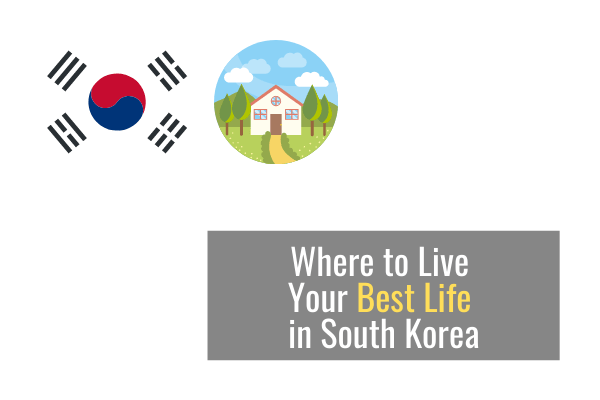
What are the best areas to live in South Korea?
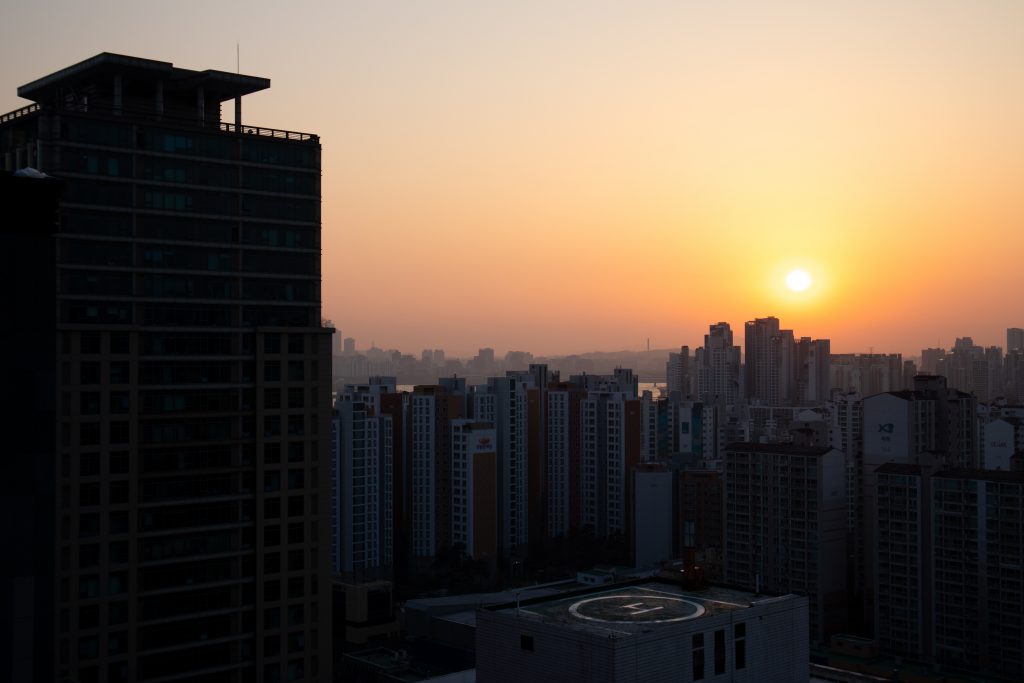
It depends on who you are what you’re looking for. A new college graduate who loves to socialize will prioritize different things than someone with young children who enjoys their “me time”.
Here are some of the notable areas to help you narrow things down. I’ll go over the pros and cons of each and what type of people will enjoy them.
Seoul (서울)
The capital and the largest city with 10 million people. Seoul is what most people picture when they think of Korea. It’s the setting of most K-dramas and you can actually spot celebrities in random places.
Pros
- It has it all, jobs, activities and culture
- Unlimited choices for nightlife
- The most attractive and well-dressed people in one place
- The place to be if you’re single and outgoing
- Is in a stage of constant change and development
Cons
- Can be crowded, noisy and polluted
- Will wear you down if you live there too long (5 to 10 years is the sweet spot)
- Extremely cold winters and hot summers
- Becoming more expensive each year
Notable neighborhoods
Shinchon/Ehwa/Hongdae (신촌/이화/홍대): Younger college towns that are right next to each other. Perfect for people in their early 20s who want to have fun.
Itaewon/Gyeongildan/Haebangchon (이태원/경리단/해방촌): The foreign districts with plenty of international food options and a small, tight knit community of expats. It can be a nice bubble for people who want something familiar. Most buildings are older and rundown.
Myeong-dong/Dongdaemun/Namdaemun (명동/동대문/남대문): There are places to shop everywhere, but these three areas have the most options. Perfect for shopaholics who don’t mind being in a crowd. Probably not the most livable areas, at least near the shopping centers.
Daeghak-ro (대학로): The artsy district with plenty of theaters and galleries. It’s not so central but it’s a great place for art lovers in their late 20s to 30s.
Jongro (종로): An older central part of the city where older people like to be. There’s a ton of history in every alley. Ikseon-dong (익선동) is a very cool place with hanok buildings from the 1920s that are full of cafes and restaurants. The area for people who want to experience more traditional culture and don’t mind living in the past.
Yeouido (여의도): The business/finance district with the National Assembly building (Korean Parliament) and TV studios. There are some great places for lunch for the large business crowd. It gets really windy since it’s surrounded by the Han River. Perfect for those who want to network with locals and teach adults.
Gangnam/Apgujeong/Shinsa (강남/압구정/신사): The wealthy but crowded part of the city. You’ll see the most attractive people here. Most of the big streets have been under construction since I’ve lived in Korea. It’s a great place to get some high-paying private lessons on the side.
Jamsil (잠실): Lots of stadiums, green spaces and amusement parks. You can find the brand-new Lotte World Tower (AKA the “Eye of Sauron”) too.
It’s not very central, but still has a lot to do. Jamsil is perfect for those who come with a family. For those traveling with babies or toddlers, it helps to have the most comfortable travel crib possible.
- Recommended areas for 20s-30s, single, recent college grads: Hongdae, Shinchon, Ehwa, Sangsu and Hapjeong
- Recommended areas for 30s-40s, single or childless couples: Yeonnam-dong, Seongbuk-dong and Buam-dong
- Recommended for families: Pyeongchang-dong, Hannam-dong, Jamsil and Seorae Maeul (Seorae French Village)
- Recommended for career-oriented people: Yeouido, Gangnam and Gwanghwamun
- Recommended for people who want to live in Korea part of the time: Itaewon, Gyeonglidan and Haebangchon (HBC)
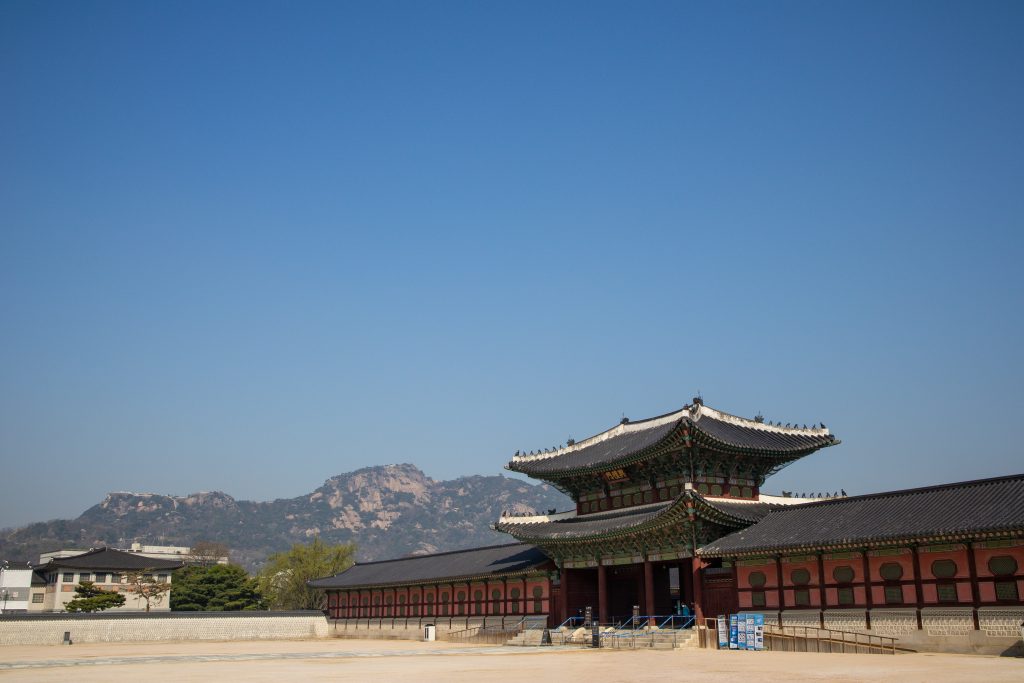
Gyeonggi (경기도)
The large province surrounding Seoul with 13 million people. It’s a suburb containing “bed towns” where people working in Seoul go to sleep.
Pros
- Less crowded and expensive than Seoul
- More green spaces and parks
- There are still many trendy neighborhoods with nice cafes and restaurants
Cons
- People in Gyeonggi say that everything is one and a half hours away, since they tend to travel to Seoul for work
- Some areas have the worst of both worlds with small town mentality/xenophobia plus the stress of working in Seoul
- Recommended areas for 20s-30s, single recent college grads: Suwon
- Recommended areas for families: Bundang, Ilsan, Bucheon, Paju and Gwangyo
Busan (부산)
An old port city down south with the best beaches outside of Jeju. It has the second largest population. People speak a different dialect that you may or may not want to learn. Even people from Seoul have difficulty understanding it.
Pros
- Did we mention the beach?
- Warmer and milder weather
- More affordable living costs including “people’s food” options
- Many colleges to choose from
- They have events rivaling those in Seoul including a large international film festival (BIFF) every year
- Summer is a great time to be single
Cons
- Older and dustier than Seoul
- Traffic is still a problem because streets are narrow
- People sound a bit more aggressive, but are generally good-natured
- Gets super touristy in the summer
- Recommended areas for young, single recent college grads: Seomyun and KSU(Kyungsung University)
- Recommended areas for families: Dongnae, Sajik, Yeongdo, Gijang and Haeundae
Incheon (인천)
More than just the airport, Incheon is a city with just under 3 million people. Its area is nearly twice the size of Seoul’s.
Pros
- Some of the neighborhoods like Songdo are brand new and very livable
- Lots of English teaching job opportunities
- Very affordable
- Not nearly as crowded as Seoul and Gyeonggi
- Close to the airport so you can travel easily
Cons
- Worse air pollution compared to Seoul since it’s closer to factories, ports and countries that pollute
- Beaches aren’t the nicest around
- Recommended areas: Songdo, Bupyeong, Guwol-dong and Inha University
Changwon (창원)
A planned city based on Canberra, Australia. Changwon is an affluent place with a nice shopping district and mountains for hiking.
Changwon unified with/absorbed Masan and Jinhae in 2010. But locals still refer to them separately since they view Changwon as newer and wealthy whereas Masan is older and Jinhae is known for the navy and cherry blossoms.
Pros
- Organized and easy to navigate
- The whole city is bikeable since it’s covered with bike lanes
- Numerous green spaces and parks
- Not nearly as crowded as Busan
- There’s more nightlife than you’d imagine
Cons
- Feels more like a suburb
- Prices are rising and it’s getting more crowded
- Not the most exciting place to be
- Recommended areas for families: Yongho-dong, Banlim-dong, Palyong-dong and Gaeumjeong-dong
Daejeon (대전)
A large city that prioritizes education. It’s an easy place to live and get around.
Pros
- Some of the areas are very livable
- In the center of Korea so it’s easy to travel around the country
- Not as crowded as Seoul and Gyeonggi
- Traffic jams are rare
Cons
- It can be very expensive even though it’s far away from Seoul
- It’s a bit older with less new housing options
- Not a lot to see, eat or do
- Recommended areas: Gung-dong, Wolpyeong-dong, Dunsan-dong and Sinseong-dong
Cheongju (청주)
A sleepy town with great restaurants and cafes. For whatever reason, the food culture is very developed here. People are very quiet and laid-back in general.
Pros
- Lower cost of living than Seoul
- In the center of Korea so it’s easy to get around
- Not as crowded as Seoul and Gyeonggi
- People seem to be quieter and independent
Cons
- Large semi-conductor factory in the north of the city
- Recommended areas: Gagyeong-dong, Bokdae-dong, Yullyang-dong and Sannam-dong
Gwangju (광주)
The food capital of Korea with an art culture and a trendy downtown.
I’ve had some of the best Korean meals in Gwangju. You get stuffed for under 10 dollars at places like Chammwoe (참뫼 광주 동구 중앙로196번길 23-12) where they keep bringing out fresh and delicious side dishes until you can no longer stand.
Gwangju feels like an alternate reality of Korea where women can smoke in public, and the economy hasn’t taken off to the point where people no longer care about food (This will make more sense when you go there.).
Pros
- Down-to-earth vibe compared to Seoul
- More open-minded people
- Tons of museums and exhibitions
- Food is on another level
- Close to Boseong Tea Fields
Cons
- Infrastructure is rundown
- Traffic is bad during rush hour
- Recommended areas: Sa-dong, Dongmyeong-dong and Daein-dong
Jeonju (전주)
A smaller city with a super-touristy center. You can think of Jeonju as a mini-Gwangju (but don’t tell them that.).
To out-of-towners, Jeonju is famous for bibimbap. The last time I was there I asked a taxi driver where the best bibimbap place was. After thinking for a good while he said, “we don’t really eat that here”, as in, that’s just for tourists. So make of that what you will.
Pros
- Good food culture
- Small town and traditional vibe
- Easy to get out into nature
- PNB Bakery, home to the best Choco Pies
Cons
- Not much to do besides the main tourist attractions
- City is old and rundown in places
- Recommended areas: Pyeonghwa-dong, Hyoja-dong, Jeonju University, and Chonju National University
Pohang (포항)
Quaint seaside city with a steel mill and lots of jobs.
Pros
- Right on the ocean
- Laid-back
- Easy to get out into nature
Cons
- Steel mills don’t provide the best living conditions (but the sea breeze tends to keep the air clean)
- Not that much to do
- Recommended areas: Yangdeok, Jigok and Daejam-dong
Jeju (제주)
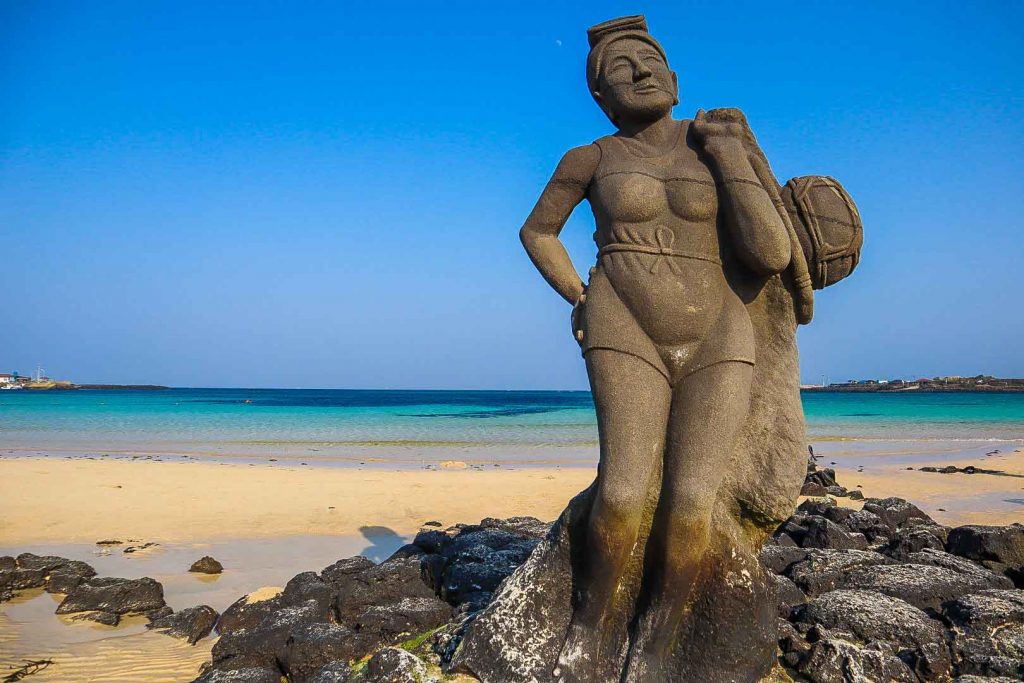
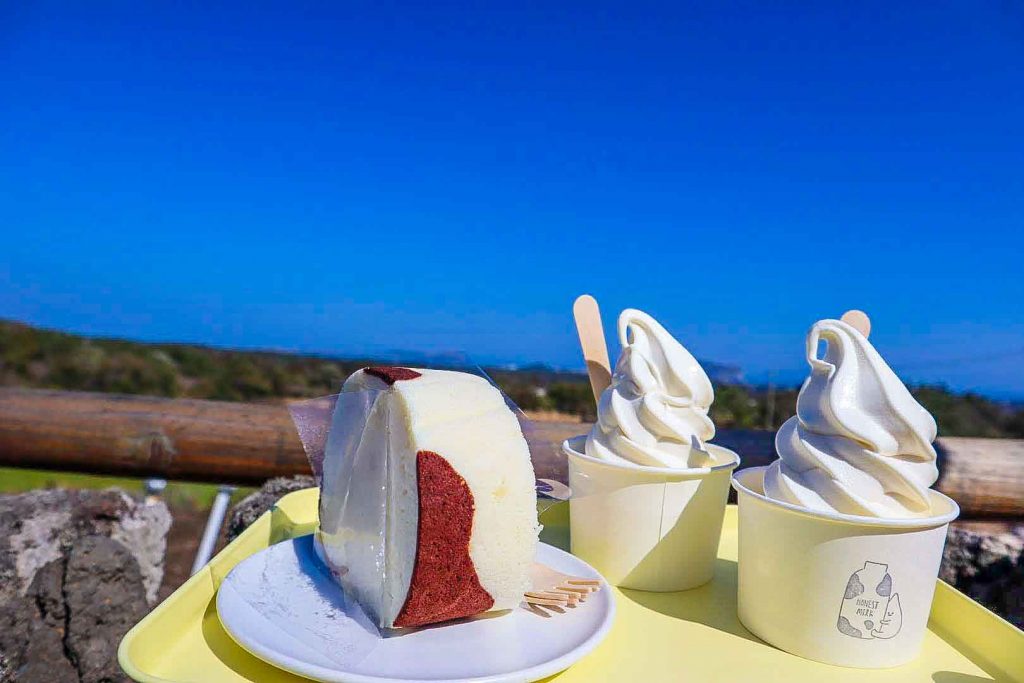
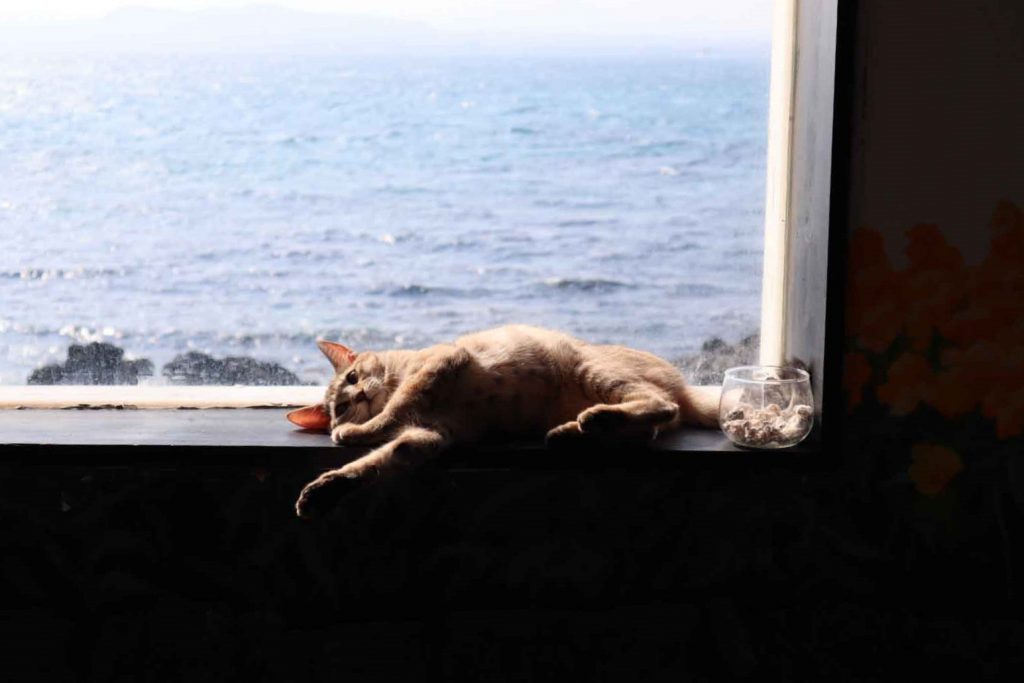
The Hawaii of Korea that has its own unique culture and dialect.
Pros
- You’re surrounded by ocean and beautiful nature
- Trendy places are on the rise with the influx of Seoulites relocating there
- There are ranches where you can enjoy farm life and green tea plantations
- The most laid-back place in Korea
Cons
- Small island mentality of scarcity
- Nightlife isn’t that thrilling during the low-season (winter)
- Air pollution and tourism have increased over the years
- You’ll need a car to get around
- Recommended areas: Aewol, Gujwa and Seogwipo

The world isn’t divided into countries or cities, but neighborhoods and streets.
You can find hidden gem neighborhoods where you least suspect; and with new buildings popping up everywhere, you can afford to be picky.
On the other hand, you might end up with a bar, gas station or factory as your neighbor. Knowing the lay of the land and culture will help you avoid these surprises.
I’ve lived in five provinces over the years during different phases of my life. I was a recent college grad when I arrived in 2006, looking for adventure and challenges.
I entered my thirties and sought a more laid-back lifestyle.
More about Why You Should Live in Korea
What it’s like to live in different neighborhoods in South Korea
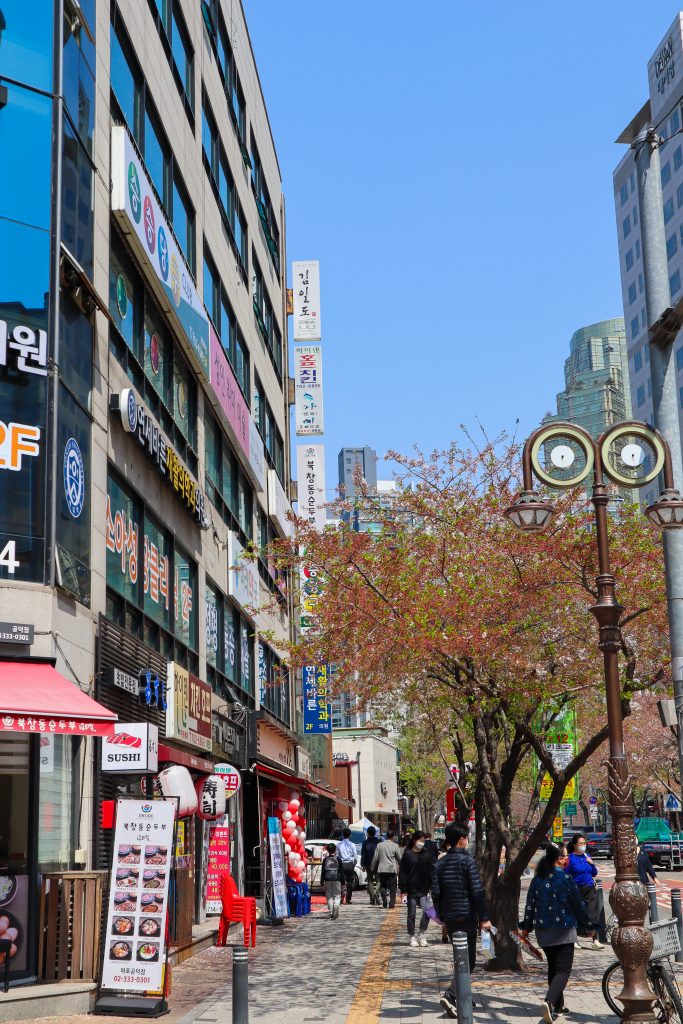
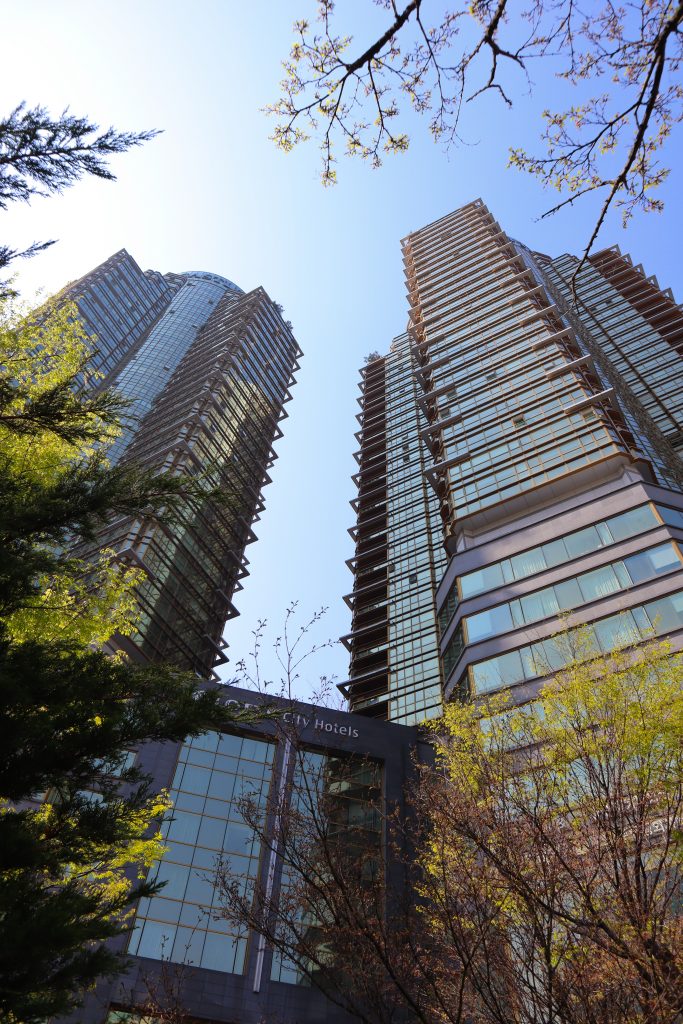
I first lived in Singil-dong (신길동), Seoul in a half-basement house next to a noraebang and lots of seedy bars. I would see people’s shoes through my bedroom window as they walked by at all hours of the night.
This was the lowest point in my Korean experience. It was still fun because I was learning the language and trying new things. I was in my early 20s and a lot more resilient.
More about How to Move to Korea
Next, I stayed in an empty room with a former student’s brother in Haengshin-dong (행신동) near Ilsan. I slept on the floor for 8 months and did odd jobs to make ends meet. The area had mostly kids, ajummas and restaurant chains. I wasn’t a fan. The air was very clean at the time and it was a bit colder on average than in Seoul.
After that, I got a great place in Mapo near Gongdeok Station where I taught the owner’s kids English instead of paying rent. I lived there happily for around 6 years and had a blast. Over time, the air got worse and the appeal of living in a big city diminished.
I left to slow travel the world for 5 years until the COVID-19 pandemic guided me back. I did check out Buam-dong (부암동) and Gimpo at one point during visa renewals, but didn’t like them enough to justify staying.
I wasn’t thrilled to come back to Korea to be honest. I thought my time there had concluded. I didn’t want to live in Seoul because I was over the crowds and noise.
But, I was pleasantly surprised when I arrived. Korea handled the pandemic about as well as one could hope for. I was registered, escorted and tested without a hitch.
Online grocery shopping options had exploded and I could buy international goods from the comfort of my home. Koreans had become more aware of work-life balance (워라밸) and enjoyed a lot more hobbies than before like surfing and camping.
Korea’s coffee game also stepped up to be competitive with anywhere in the world. Before I left, there were only a handful of places that focused on quality. Now, there are small roasteries in every city and I can get a decent cup at any random place.
Another interesting change was that the number of jacked tattooed people increased exponentially while I was gone. The main demographic at fitness centers before was retirees. Gym culture has become mainstream and there are many options available, even locally-made equipment which I use at home.
More about fitness in Korea
One thing about Korea is, if you don’t like it now, just wait a few years. And as I learned on my travels, there’s a lot more to a country than its capital city.
I decided to look southward for better weather and living conditions. I did my mandatory 14-day quarantine in Cheongju, which is the home of CDC Korea. I checked out some local neighborhoods after to see if I wanted to stay there. There’s a lot to do in Cheongju and a really nice downtown, but digging deeper is always a good idea.
I took a train to Gyeongsang-do to check out Busan and other areas. I found a quiet neighborhood with a laid-back culture (for Korea), great cafes and a lot of green spaces. It’s perfect for where I am in life.
I believe that there’s a place in Korea for everyone.
What to know before living in South Korea
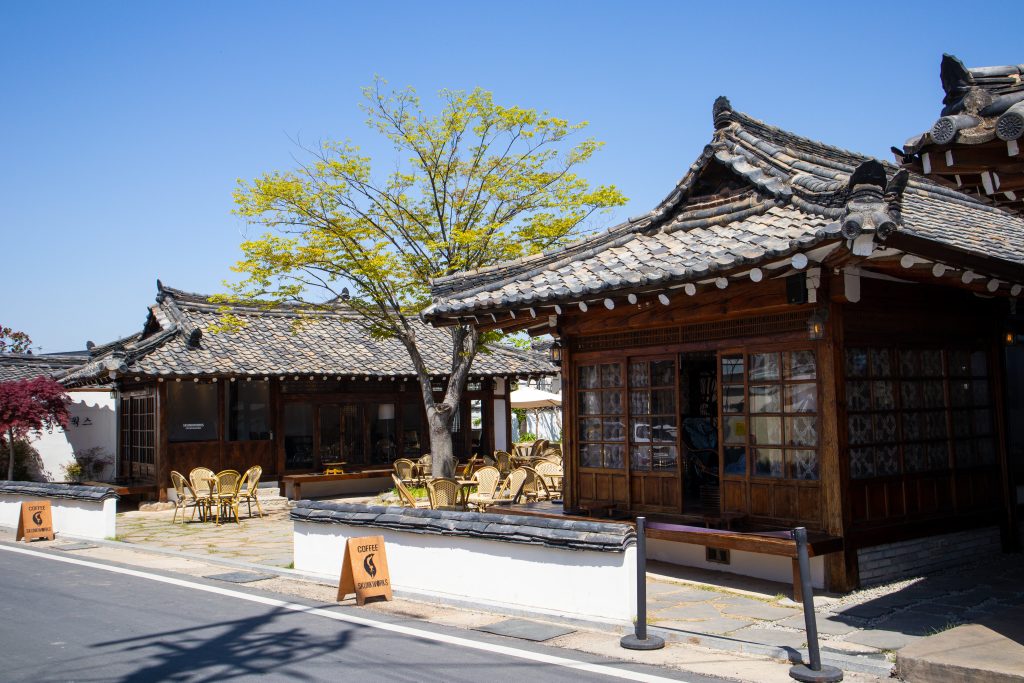
Korea was basically a feudalistic society 100 years ago and went through a rapid and difficult modernization period. It has progressed immensely, even in the time I’ve been here. For example, smoking was allowed in every building before, but now it’s strictly prohibited. There’s also been crackdowns on drunk driving, noise pollution and domestic abuse.
More about How to Survive in Korea as an Expat
Many people who have lived through a war, dictatorships and economic crises are still around. It’s good to keep this in mind when you’re interacting with people. I’ve dealt with a fraction of those hardships and I can be rough around the edges.
City planning tends to take a backseat to development. After the country was destroyed in the Korean War, things had to be rebuilt quickly with little concern for presentation. You can imagine that aesthetics take a backseat to getting things done when resources are limited.
Also, your quiet neighborhood can become a hot spot overnight. For example, I was a regular at Gyeonglidan-gil from 2010-2014, since it was a quiet place for expats to take a break from Korea and enjoy international cuisine. That is, until someone opened up a churros shop and got on TV (Infinite Challenge- 무한도전). It became uber trendy and packed on the weekends after that. Rent skyrocketed, half the places started selling churros and it lost its charm.
Nevertheless, there’s a wide range of neighborhoods to choose from. The key is living off the main streets.
How to check out your neighborhood in Korea before moving in
Wouldn’t it be great to predict the future? Imagine the headaches you could avoid.
I can offer the next best thing, a way to check out your street and building in Korea before living there.
After booking 40 Airbnbs over the course of five years in 30 different countries, I’ve become proficient in the art of researching livability before setting foot in a country.
The secret ingredient is the internet.
Google Maps is limited in Korea. Street view covers Seoul well enough, but not other areas. At best you’ll only get random snapshots.
You’ll have to use a combination of Google and Naver Map.
Hop on both and type in your potential address.
Look around the area for bars, nightclubs, noraebangs and schools.
Type in the following and search for them nearby:
- 공장 (factory)
- 나이트 or 클럽 (club)
- 노래방 (noraebang) or 단란주점 (karaoke bar)
- 술집 (bar/pub)
- 주유소 (gas station)
Next, read the reviews of potential apartments or look for them on Naver Blog. Use Google Translate or Papago if you can’t understand Korean to get the gist.
When in doubt, feel free to leave a comment below and we’ll check it out for you.
Some things like your upstairs neighbors are luck of the draw. A few people I know bought brand new apartments in nice neighborhoods, only to be living under midnight tap dance enthusiasts. I’ve stayed in older, rundown places with super quiet tenants too.
- Recommended housing type for singles, couples (who get along well), career-oriented people and recent college grads: Officetels (오피스텔)
- Recommended housing type for families and multiple roommates: Brand apartments (아파트)
Things to avoid
Mansions and Villas: sound great but are actually small apartment buildings with around 10 units. They’re often poorly insulated and sometimes owned by a control freak who lives above you and loves to micromanage. Needless to say, they’re very hit or miss depending on your neighbors and landlord.
Industrial buildings: in many regions outside of Seoul, you might be living in the shadow of a semi-conductor factory or power plant. This may be great for jobs and the economy, but not for your health.
English Villages: great in theory but tend to function more like Little Pyeongyang.
Gas stations: they’re often built right next to apartments.
Main streets: it’s always a good idea to have your windows facing an empty alley to avoid scooter and car noise at night.
Basement or rooftop houses: they may seem quaint and rustic, but they often come with mold, insects and other unsavory characters.
Large shamanist temples: most religious buildings in Korea are quiet, but shamans tend to make their money in exorcisms. This might sound like a fun novelty and a chance to immerse yourself in local culture, but in reality, they’re a nightmare to live next to. You can expect mildly hallucinogenic incense wafting in the air, drums banging at all hours of the night and unsavory characters straight out of a Korean horror movie. (I checked out a nice place near one for a few hours and confirmed with a local) Most people want no part of this so you’ll be left with neighbors with little to lose.
FAQ
Where is the best place to live in Korea?
It depends on what you’re looking for. Somewhere not too crowded and away from large streets is a good idea. You can check out places on Google Maps and Naver Map. We cover different cities above in detail and what type of person would like them.
What is the safest city in South Korea?
Crime statistics are hard to come by in South Korea, but safety is not an issue. It has one of the lowest crime rates in the world. Seoul is ranked 9th in the world in terms of safety.
What is the most beautiful city in South Korea?
It depends on your definition of beauty.
- For historical buildings, Gyeongju (경주)
- For the beach, Busan (부산)
- For nature, Seogwipo (서귀포)
What is the cleanest city in South Korea?
Changwon is one of the cleaner cities with the same layout as Canberra, Australia.
When should I move to Korea?
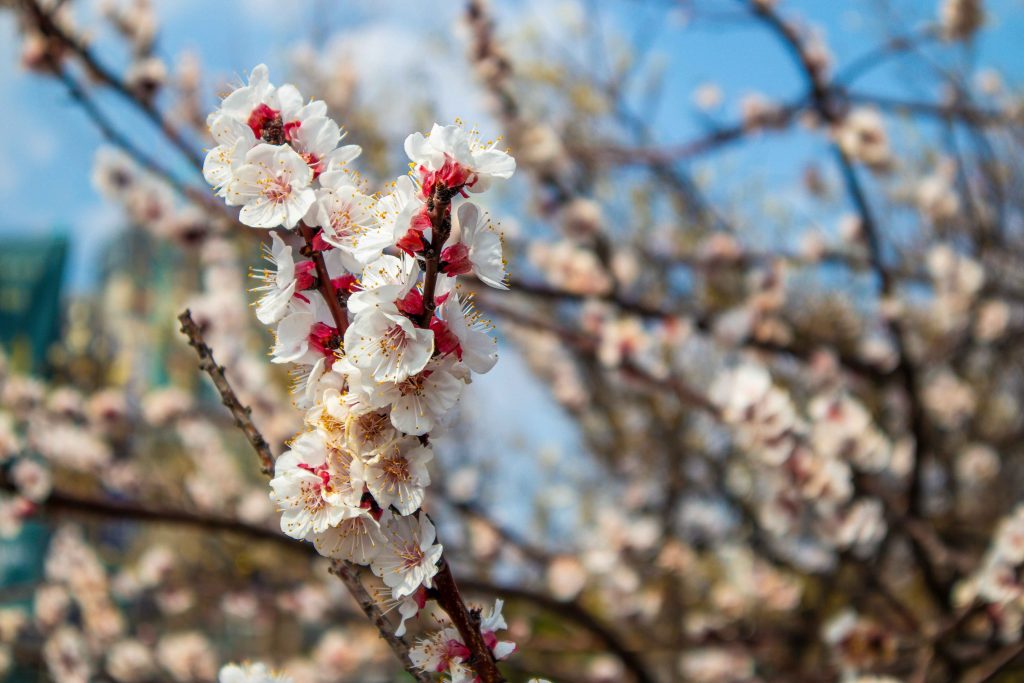
Early Spring around mid-March is ideal. It gives you plenty of time to settle in and enjoy the best season of the year.
Where do expats live in Seoul?
They live all over the place, but they tend to gather in the Itaewon (including Gyeonglidan, Haebangchon, Hannam and Yongsan) and Gangnam areas.
Can you live in South Korea without knowing Korean?
Yes, many locals speak English and even more understand it. It’s still a good idea to learn the basics before going to have a better time.
Did we miss anything?
Korea is a great place to live as an expat.
Now we want to hear from you.
Let us know your favorite city in the comments!
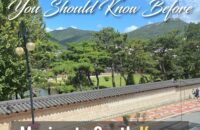
![Traveling to Korea and K-quarantine during the COVID-19 Pandemic [2020]](https://linguasia.com/wp-content/uploads/Traveling-to-Korea-with-K-quarantine-during-the-COVID-19-Pandemic-200x130.png)
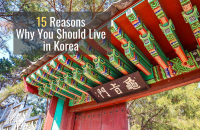
I love Namgajwa-dong before it got destroyed by high rise apartments.
It’s still however my favourite neighbourhood next to yeonhuidong
Hi Ashlene,
It definitely had a lot more personality. Hopefully Yeonhuidong stays the same. Although it’s technically not in Yeonhuidong, I love Pie Republic and all the awesome restaurants and cafes in that area. I can’t wait to go again after the pandemic!
hello my name.is carol hill and i want to live in korea and i dont know how yo go and research it ad finding a kob etc any.help would be greatly appercitle
Hi Carol, thanks for writing. You can check out our job post. There are links on the page to sites with job postings. Happy hunting!